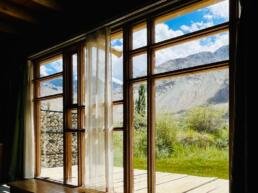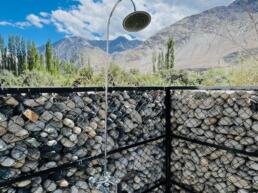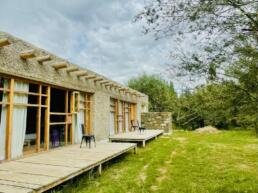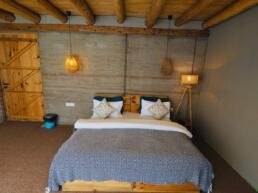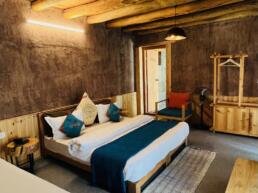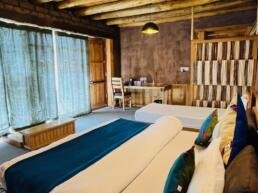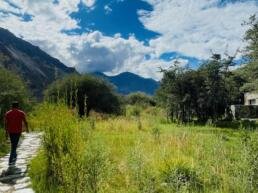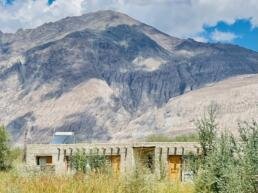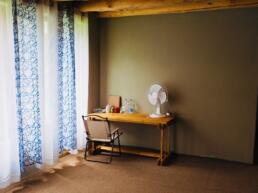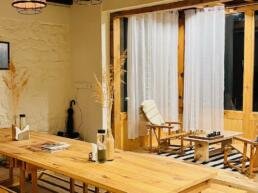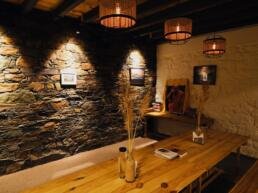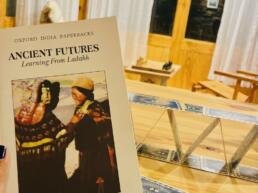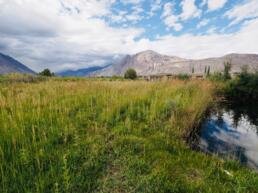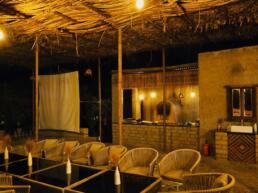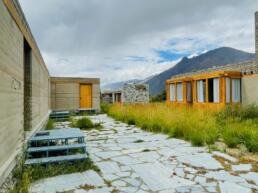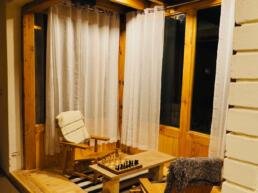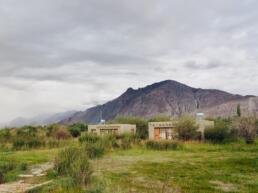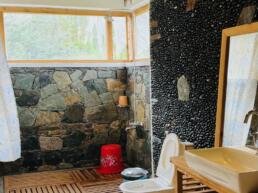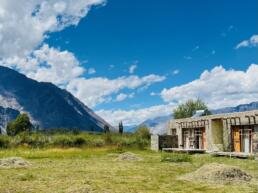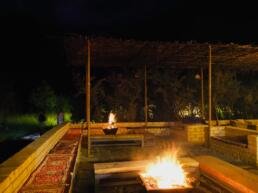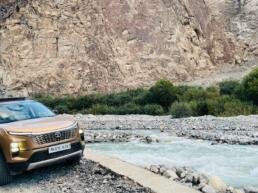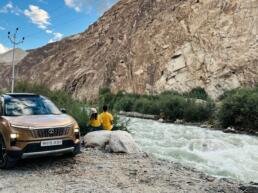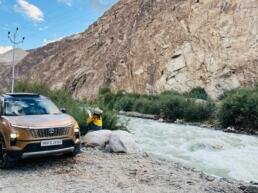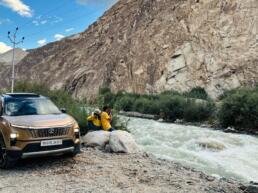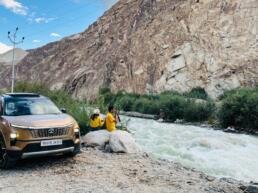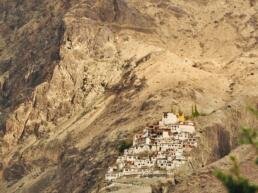It’s strange how certain places manage to surprise you. Not in grand, theatrical ways —but in quiet, unassuming moments that leave an imprint long after you’ve left. Nubra Valley did that to me.

The journey itself was a study in contrasts. Leaving the ochre-toned vastness of Leh, we ascended towards the formidable Khardung La—one of the highest motorable passes in the world, a mountain of myths and memories. At 18,380 feet, the air was thin, but the energy of the place was thick with history and the hum of engines struggling against the altitude.
This was once a crucial part of the ancient Silk Route, where traders braved the extreme conditions to carry silk, spices, and goods between India and Central Asia. But today, the top of Khardung could be easily confused with Lonavala’s Tiger Point or Triund in Dharamshala – not because of the views, but because of the crowds. While tourists pause here for the customary photo-op, Ladakhis view Khardung La with deep reverence. Our driver told us how locals believe the mountain is sacred, and the growing number of accidents here is a sign of its anger. What was once a quiet and treacherous crossing has now become a symbol of adventure, yet for those who belong to this land, Khardung La remains a spiritual sentinel—watching over the changing tides of time.

Our driver told us how locals believe the mountain is sacred, and the growing number of accidents here is a sign of its anger.
As we crossed our first mountain pass, the landscape changed with each turn: rugged cliffs gave way to patches of stubborn greenery, frozen streams melted into gurgling brooks, and when we finally descended, the valley unfolded like a dreamscape.
Nubra is where Ladakh softens. Here, the mountains don’t just loom over you; they embrace you. The cold desert shimmers under an unforgiving sun, while the silver ribbon of the Shyok River snakes through the valley, giving life to green oases where apricot orchards thrive. It is stark, surreal, and utterly breathtaking.
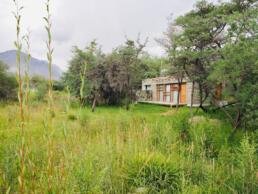
We were welcomed into The Creek where we spent 4 days and 3 nights, a boutique retreat that felt less like a hotel and more like a home whispered into existence by the land itself. Built in the traditional Ladakhi architectural style, the resort blended seamlessly into its surroundings. Mud walls kept the rooms cool during the day and warm at night, while intricate wooden carvings adorned the Ladakhi-style furniture, reminiscent of a time when craftsmanship wasn’t just about utility—it was an art.
‘The Creek’ built on a vast expanse with 12 villas and chalets, as it turns out, was not just a name but a fun story and a thoughtful ode. The land on which it stood was once a swamp—an inheritance of sorts, left to Tsering’s husband. Tsering, the heart behind running the retreat, told us how her husband had dreamed of creating something extraordinary from all the land itself. Fun fact? The dream was married into reality by an architect all the way from Andhra Pradesh (!!), who her husband happened to meet perchance on his travels. They used raw materials —wood, hay, mud, and stones from the neighboring creek and mountains —and together built The Creek. Today, when seen against the backdrop of the towering mountains, it looked as though it had always belonged—like a perfect stroke in nature’s painting.
“
As we settled into our villa after a long, winding journey - a sense of quiet elegance embraced us. It wasn’t just in the sweeping vistas or the polished wood beneath our feet—it was in the finer, almost invisible touches.
“
he intricate latticework of the windows that let in just enough golden sunlight. The warmth of the staff who greeted us where we gathered for meals. The absence of plastic on the property, and in our rooms. Even the sustainable use of water, carefully repurposed for both irrigation and sanitation, a small yet powerful reminder that luxury could be sustainable. It was a place where comfort and care for the environment came together, making every moment feel not just indulgent, but conscious.
We spent our first evening at the property under a sky ablaze with a million stars, a full moon, and a bonfire. The crackling flames, the crisp mountain air, and the sound of Ladakhi folk tunes played by a local musician felt like a scene from an old memory I had never lived—but somehow recognized.
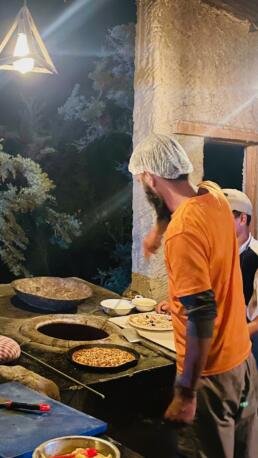
And then came the real surprise. In a place with no mobile network, where nature dictated the pace of life, where the harsh winter would soon bring an abrupt pause to it all—we had wood-fired pizzas.
In a valley where locals get barely six months to make a living before the unforgiving cold sets in, someone had figured out how to make the perfect wood-fired pizza. We bit into warm, smoky crusts topped with fresh vegetables, gooey cheese, and just the right hint of spice. Sitting there, miles away from the bustle of modern life, the irony was not lost on us.
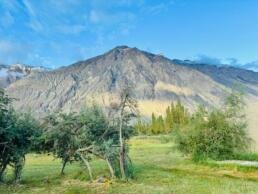
The second day took us on a drive to Turtuk, the last village on the Indo-Pakistan border. The drive itself was mesmerizing—lush greenery gradually unfolding between stark, arid mountains. Turtuk felt like a world of its own, its beauty and culture distinct from the rest of Ladakh. Unlike the cold desert landscapes we had grown accustomed to, Turtuk was vibrant with apricot orchards, walnut trees, and fields bursting with barley. The village is one of the few places in India where Balti culture thrives, and its people speak Balti, an ancient Tibetan dialect that has persisted through generations. At the very edge of Turtuk, we reached a viewpoint overlooking the Shyok River, which separates India from Pakistan. Standing there, gazing at the border, we felt the weight of history—how this region had changed hands over wars.
In the evening, we sat back with Tsering, some coffee and some stories. About her childhood in a village called Achi, her years in Delhi as a travel agent, about marrying into Diskit, Nubra, and about this dream she now nurtures alongside her husband.
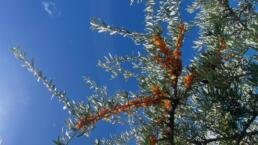
Her stories reeked the tapestry of a changing Ladakh. She spoke of a time when wheat and sugar were rare delicacies, saved for special occasions, as Ladakh does not grow these crops. How she didn’t even know what rice was until well into her grown years. She recalled walking 45 minutes with her mother and sisters, crossing rivers to buy essentials—now, no one goes anywhere without a car. A wistful reflection on the evolution of her homeland, a balance between nostalgia and adaptation to modernity.
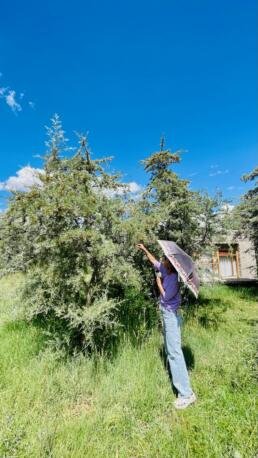
How she didn’t even know what rice was until well into her grown years. She recalled walking 45 minutes with her mother and sisters, crossing rivers to buy essentials—now, no one goes anywhere without a car.
She showed me how she preserves vegetation that preexisted on the lands of The Creek, including the numerous sea buckthorn trees! We plucked some berries that gleamed like tiny orange jewels, and as I tasted them, they burst with an unexpected, fiery zest—explosively bold and unforgettable. She radiated joy, completely in her element — a pure reminder of what people look like when they do what they love, and live a life they believe in.
There’s something truly humbling about meeting people who have carved their dreams out of the earth they stand on. People who measure time not in seconds or deadlines but in seasons.

The next morning, as we packed up to leave for, I found myself pausing at the entrance of The Creek. The wooden beams, the mud walls, the warmth of it all—it had settled into my heart.
Nestled in the valley, neither imposing nor insignificant. Just present. Just part of the canvas.
Somehow, I knew—I would return.
